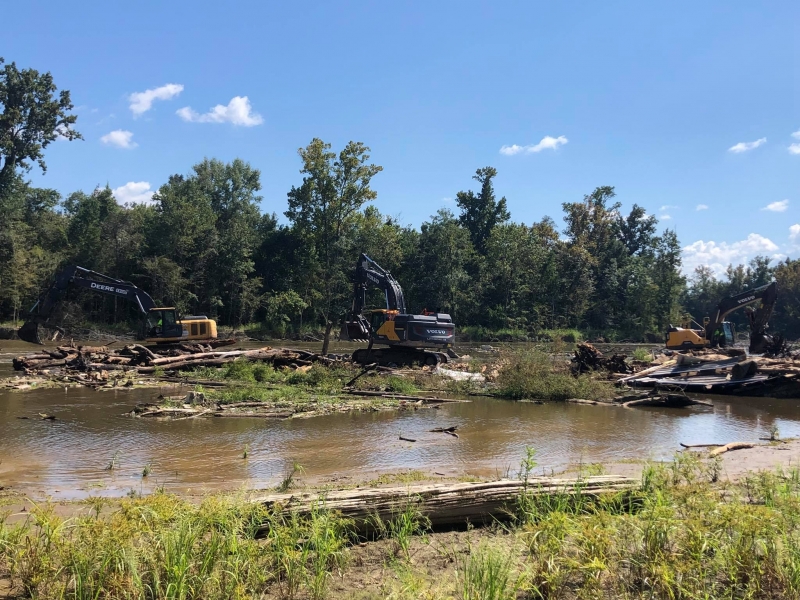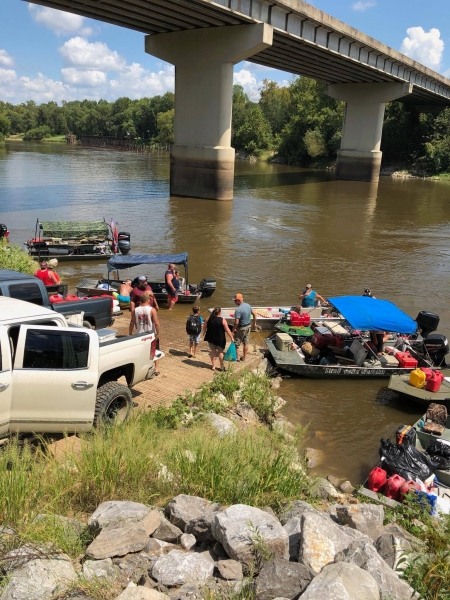By Jessica Graham, Southeast Aquatic Resources Partnership
Rivers and streams meander across the landscape connecting uplands to riverbeds, inland to coastal habitats, and mountains to the Gulf Coastal Plain as they cut and shape the landscape. The connection between upstream and coastal habitats is critical to the survival of many fish and wildlife species that depend upon the estuarine environment and more directly to the fish species that need unimpeded connection to upstream spawning habitats (e.g., Gulf and Atlantic Sturgeon, Alabama shad, and American eel). One of these important systems is the Pearl River Basin located in east-central and southwest Mississippi and in southeastern Louisiana.
The Pearl River is one of the most biologically diverse river systems in the Southeast with over 140 fish species and 28 mussel species, making it a high priority for conservation. The lower Pearl River has one of the healthiest marsh complexes in the Southeast and is designated as Essential Fish Habitat (EFH) for 53 species of fish and shrimp. The Pearl’s freshwater discharge to the estuaries of Lake Borgne and the western sound ensures that these waters have the proper salinity to produce oysters, shrimp, and fish that are economically important. It is a popular basin for both fresh and saltwater fishing and supports numerous commercial fisheries including blue and channel catfish, crawfish, and blue crab.
Overtime the Pearl River, just upstream of Bogalusa, became blocked by an over accumulation of woody debris resulting in part by land use changes and then accelerated through recent hurricanes and flooding events. This project, funded through a NOAA Marine Debris Community-based Removal grant, combines efforts across multiple federal, state, and local agencies, NGOs, corporations, and local communities to restore hydrologic function through the removal of accumulated debris. This project consists of three phases. The first phase completed by US Fish and Wildlife Service (USFWS) Fisheries and the USFWS Aquatic Habitat Restoration Team used heavy equipment to remove the main river blockage that was composed of both woody debris and man-made debris.

The second phase of the project, conducted by the Pearl Riverkeeper, collected man-made debris from the riverbanks and accessible instream areas, which will be repeated again the Fall 2019.

The third phase, coordinated by USFWS Fisheries staff, is the targeted removal of derelict vessels that were unable to be removed via heavy equipment in the first phase. To date, this project has brought together representatives from multiple entities and over 100 community volunteers to remove and sort over 18,000 pounds of debris from the Pearl River.
It’s Gulf of Mexico Week on the Marine Debris Blog! Check out Tuesday’s post on Litter-free Mardi Gras and Wednesday's post on newly funded projects.

We should Strongly address the Oil, Gasoline, Diesel Spills and measures to CLEAN IT UP...Not put a Band Aid on trying to clean it up, but CLEAN IT UP!